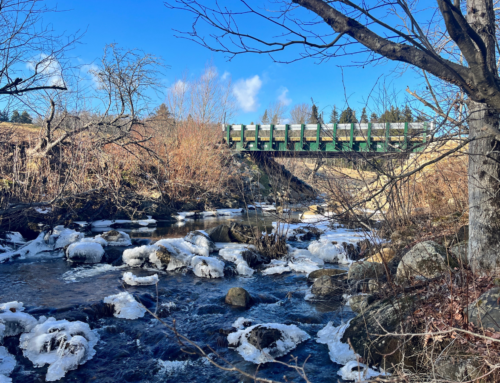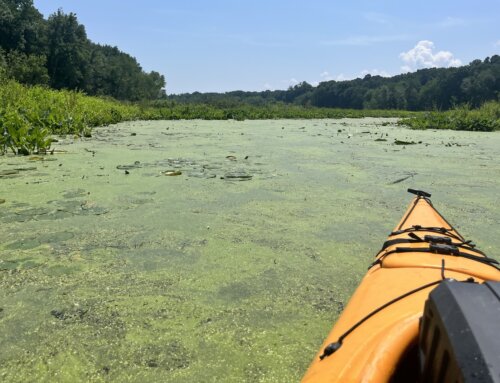Greenfield, MA— Last fall, Connecticut River Conservancy (CRC) joined the Massachusetts Rivers Alliance and eight other watershed groups from across Massachusetts to file suit against Scott Pruitt and the EPA in Boston’s federal district court. Their request of the court is simple: Reject EPA’s one-year delay in implementing Massachusetts’ new stormwater permit. Their reason for suing is even simpler: stormwater is one of the greatest threats to clean water in Massachusetts.
This lawsuit is part of a growing national trend in suing the EPA in order to protect our environment. From the moment they took office, the Trump Administration, Pruitt and the EPA have been hastily rolling back environmental regulations. But mistakes have been made in their haste and disregard for legal process, such as failing to hold required public comment periods or provide rationale for a repeal or delay. Now, environmental groups across the nation are going to court and using these mistakes to successfully halt environmental rollbacks. For example, the courts have prevented the suspension of rules to curb methane emissions and the delay of tougher standards on air pollutants and lead in paint.
This local lawsuit is an example of local clean water advocates taking a stand against rollbacks that threaten our health, safety, and quality of life. River advocates fear that the updated stormwater permit could be delayed much longer than one year. “We think the EPA’s legal case is fundamentally flawed,” says Andrew Fisk, Executive Director of the Connecticut River Conservancy. “Pruitt and the EPA have asked for this delay while permit appeals are being decided, but then in the same breath also asked the court to delay judicial review of the appeals. It is clear that EPA is looking at every maneuver they can find to stop doing the right thing for the public’s water.” The river groups are represented by Kevin Cassidy of Earthrise Law Center and Access to Justice Fellow Irene C. Freidel.
Of particular concern is the public health issue of harmful bacteria flowing to rivers when it rains. About one in five water samples collected by CRC and partners in 2017 from the Connecticut River and tributaries in Massachusetts showed bacteria levels too high for recreation (swimming and/or boating). “Delaying the implementation of this updated permit puts our rivers and our water at risk, which also put our citizens and local economies that use and rely on our rivers at risk,” Fisk continues. “The EPA is charged with implementing the Clean Water Act for the benefit of the public, yet it did not weigh the public’s interest when it slammed the brakes on the MS4 Permit.”
The permit, known as the ‘MS4’ for small ‘municipal separate storm sewer systems,’ regulates stormwater pollution under the federal Clean Water Act. The current MS4 Permit was issued in 2003 and was set to expire on May 1, 2008. Instead, it has been administratively continued and remains in effect. A multi-year, multi-stakeholder process for updating the expired permit began in 2008. In April, 2016 EPA issued the updated MS4 Permit, after many rounds of public comment. The updated permit was set to go into effect on July 1, 2017 but was abruptly delayed by Pruitt and the EPA just two days before that date. The delay will cause existing stormwater projects to move forward with outdated stormwater controls, forcing costly upgrades in the future rather than the lower cost option of adding updated controls at the time of construction. The delay also ignores the time and money invested by cities and towns that have already implemented new stormwater protection measures in preparation for the new permit to take effect last July.
Stormwater is generated from rain and snowmelt that does not soak into the ground. Instead it flows over land or impervious surfaces, such as paved streets and driveways, parking lots, and building rooftops into storm drains. During heavy rains, stormwater can flow directly into our rivers. Common pollutants in stormwater runoff include antifreeze, detergents, fertilizers, gasoline, household chemicals, oil and grease, paints, pesticides, harmful bacteria, fecal matter from pets, farm animals and wildlife, road salt, trash such as plastics and cigarette butts, ammonia, and solvents.
Since 1952, Connecticut River Conservancy has been the voice for the Connecticut River watershed, from source to sea. We collaborate with partners across four states to protect and advocate for your rivers and educate and engage communities. We bring people together to prevent pollution, improve habitat, and promote enjoyment of your river and its tributary streams. Healthy rivers support healthy economies. To learn more about CRC, or to make a contribution to help protect the Connecticut River, visit ctriver.org.
###







